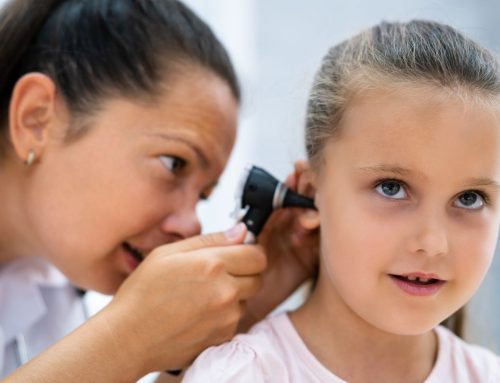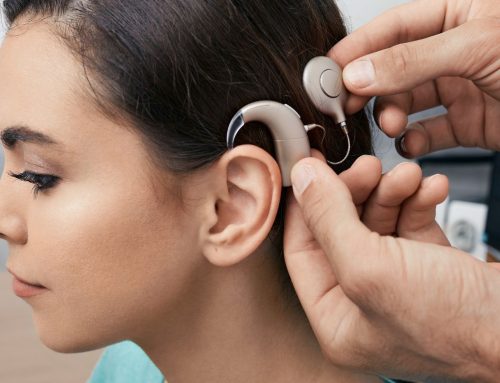A pediatric nasal endoscopy involves a doctor examining the inside of your child’s nasal passages. Here’s what to expect during a pediatric nasal endoscopy: preparation steps, the procedure itself, and post-procedure care.
Key Takeaways
- Pediatric nasal endoscopy is a brief procedure that helps diagnose and treat conditions affecting the nose and sinuses in children.
- Preparation for the procedure includes consultations with the doctor, potential fasting, and understanding the process to alleviate anxiety in both the child and parents.
- Post-procedure care is essential, with follow-up instructions provided to manage recovery and maintain communication with healthcare professionals regarding any concerning symptoms.
Overview of Pediatric Nasal Endoscopy
Nasal endoscopy is a diagnostic medical technique employed to scrutinize the internal areas of the nose and sinuses, providing health care professionals with an unobstructed perspective of these structures. This method is especially beneficial for identifying conditions that lead to chronic nasal blockage, facial discomfort, or olfactory impairment in children.
During a nasal endoscopy procedure, physicians use a specialized tool known as a nasal endoscope, which comes outfitted with both illumination and a minuscule camera. By traversing the nostrils’ pathways with this instrument, doctors are capable of detecting issues like the presence of nasal polyps or infections as well as any irregularities affecting the nasal septum or other regions within the nose.
Should it be deemed necessary based on findings during this examination process, practitioners may carry out sinus surgery utilizing an identical approach. Such operations can address persistent cases of sinusitis or clear physical obstructions. The comprehensive visualization afforded by performing nasendoscopy permits precise diagnosis and formulation of effective management strategies tailored specifically for pediatric patients experiencing difficulties related to their nose and throat.
Preparing Your Child for the Procedure
Preparing your child for a nasal endoscopy involves several important steps. Begin by consulting with the doctor overseeing your child’s care to understand specific preparatory measures, such as discontinuing certain prescriptions and identifying which non-prescription drugs should be avoided prior to the procedure.
Depending on individual circumstances, it may be necessary for your child to fast before undergoing the endoscopy. Verify any fasting guidelines with the healthcare professional in charge of your child’s case to ensure they are properly prepared for their appointment. As a general rule, children are often instructed not to consume any food at least two hours before their scheduled arrival time at the medical center.
During an initial discussion with you and your youngster, healthcare providers will detail what happens during a nasal endoscopy in order to reduce worry or fear about the upcoming procedure. This is also when parents can delve into their child’s health background and pose inquiries regarding specifics of what will take place during the examination.
Read more : How to Prepare Your Child for Their First ENT Appointment
The Day of the Procedure
Arrive early at the clinic on the day of the nasal endoscopy to allow time for check-in and preparation. Generally conducted as an outpatient service, the procedure lasts about five minutes, making it quick and straightforward.
The process involves two main stages before the endoscopy: Arrival and Check-In, and Pre-Procedure Preparations. These steps are key to ensuring the procedure goes smoothly and your child is comfortable.
Arrival and Check-In
Upon reaching the clinic, families are first required to check in, during which they confirm their personal information and specify the purpose of their visit. During this initial phase, it is necessary to provide fundamental details and validate insurance coverage to guarantee that all arrangements are properly set.
During this period, parents might also have to complete consent forms and go over the intended procedure with members of the healthcare team. This preparation helps facilitate a seamless and relaxed experience for everyone involved.
Pre-Procedure Preparations
Prior to the nasal endoscopy, medical personnel will explain how the procedure works and address any inquiries from you or your child. This period is also dedicated to going over which medicines, including those that can be purchased without a prescription, should not be taken before undergoing surgery.
Typically, children are required to abstain from consuming food or liquids past midnight on the day preceding their surgery. To desensitize your child’s nasal region before performing an endoscopy, a spray with local anesthetic properties is administered into their nostrils. In certain cases, general anesthesia may be employed during the procedure in order to maintain your child’s comfort level throughout its duration.
During the Nasal Endoscopy
During the nasal endoscopy procedure, which is quite short and usually lasts only about one to two minutes, the nasal endoscope is used to examine your child’s nasal and sinus passages. This tool aids in various tasks such as taking biopsies or extracting foreign objects that may be present.
The information provided here aims to clarify the function of the nasal endoscope and what your child can expect throughout this procedure so you have a thorough understanding of each phase involved.
Role of the Nasal Endoscope
In this procedure, the nasal endoscope plays a crucial role, equipped with an illumination source and a minuscule camera which enables physicians to peer into the nasal passages. The instrument’s size is particularly adapted for young patients, measuring between 2.7 to 4 mm in diameter.
This tool not only facilitates the expansion and dilation of the nasal passageways, but also provides an unobstructed visual of both nasal and sinus anatomy. This assists medical professionals in accurately identifying and managing diverse ailments within these areas.
What Your Child Will Experience
A numbing spray or gel may be applied to a child’s nasal passages to reduce discomfort. This medication typically guarantees that the procedure will be pain-free.
The majority of children undergo nasal endoscopy with little discomfort, resulting in an easy and low-stress experience for both the child and their parents.
Post-Procedure Care
Caring for your child following a nasal endoscopy is essential to ensure a smooth recovery process. This includes immediate post-procedure care and subsequent follow-up guidelines, offering you all the requisite details for proper home management of your child’s aftercare.
Immediate Aftercare
Following the procedure, your child will be under observation in the recovery room to maintain their stability and comfort. It is common for them to have symptoms such as a sore nose, nose bleeding, difficulty breathing through the nose, and problems with swallowing right after undergoing an endoscopy.
To aid in their recuperation post-procedure, they will typically receive IV fluids and may start on clear liquids. Pain management will often involve administering pain relief medications. Oral steroids and antibiotics might be provided to help control any swelling and reduce the risk of infection.
Follow-Up Instructions
Ensuring proper aftercare is crucial for a smooth healing process. After your child’s procedure, their post-operative nasal care might involve the application of nasal ointments or the use of saline or steroid sprays designed for nasal administration. Typically, a check-up with the healthcare provider will be organized between one to two weeks following surgery to assess how well your child is healing and to track any advancements.
Should your child endure intense discomfort that medication doesn’t alleviate, it’s important to reach out to their physician. If you notice signs such as abnormal levels of bleeding, discharge that has an offensive odor, or symptoms indicative of a fever, seek medical guidance without delay.
If vomiting or nausea continues in the aftermath of the operation, this necessitates getting in touch with your child’s doctor promptly for Evaluation and assistance.
Understanding the Results
Following the nasal endoscopy procedure, the outcomes may be communicated promptly based on what is observed. If more details are necessary for devising a treatment strategy, extra imaging tests like a CT scan could be requested.
Abnormal findings from a nasal endoscopy might necessitate subsequent procedures or treatments. The process aids in pinpointing the root causes of persistent nasal and sinus issues in children, which contributes to precise diagnoses and efficient treatment approaches.
Read more : Types of Sinus in Children – A Comprehensive Guide to Sinus Health
Risks and Complications
Nasal endoscopy for children is commonly recognized as a secure procedure, carrying only a slight chance of complications. The risks associated with it, while rare, include occurrences such as bleeding, the possibility of infection, and harm to the structures within the nose. It is essential to be cognizant of these potential adverse effects even though they do not frequently arise.
The incidence of infections resulting from nasal endoscopy is uncommon. They may develop should there be contamination in the equipment used or if the process opens up avenues for bacterial invasion. Despite these hazards being present, nasal endoscopy continues to serve as an invaluable instrument in both diagnosing and managing various nasal conditions that affect pediatric patients.
When to Contact Your Doctor
Following a nasal endoscopy, it is typical for your child to feel a bit of mild discomfort such as minor soreness in the nose and throat regions. Should your child encounter extended periods of nasal bleeding or intense pain, it is important to reach out to their healthcare provider.
To reduce the risk of complications after the procedure, patients are advised not to blow their nose for at least one week. Should any unusual or worrying symptoms arise during recovery, contact your healthcare provider promptly for guidance.
Read more : How to Know When to Take Your Child to an ENT: Useful Insights
Summary
In conclusion, being informed about what to expect during a pediatric nasal endoscopy can greatly ease the experience for both you and your child. From preparation to post-procedure care, every step is meticulously designed to ensure a safe and effective process.
In addition to pediatric nasal endoscopy, we offer a range of specialized services to support your child’s health, including treatment for pediatric sinusitis, allergic rhinitis in children, endoscopic sinus surgery, and management of foreign bodies in the nose.
At Pediatric Ear, Nose, and Throat of Atlanta, P.C., we are committed to delivering expert and compassionate care for your child. Our pediatric ENT in Marietta, Duluth, Atlanta, or Alpharetta specialists are board-certified and fellowship-trained, ensuring your child receives the highest standard of care. Your child’s health and comfort are our top priorities. Reach out to us today to learn more about how we can assist you and your child.
Frequently Asked Questions
What to expect during a pediatric endoscopy?
You can expect your child to undergo a pediatric endoscopy with a flexible tube inserted through the mouth and down the esophagus, allowing the doctor to examine the stomach and small intestine.
Your child will likely experience “twilight sleep” rather than deep anesthesia, minimizing discomfort during the procedure.
How painful is a nasal endoscopy?
Nasal endoscopy is generally not painful, though you may experience some pressure during the quick, outpatient procedure.
Overall, it is well tolerated and does not require sedation.
How is a nasal endoscopy done on a child?
A nasal endoscopy on a child involves first applying a local anesthetic spray to both nostrils, allowing about 10 minutes for it to take effect.
Then, a thin, flexible endoscope equipped with a camera is gently inserted through the nostril to examine the nasal structures.
How quickly can the Rapid ENT Care Center see a child?
The Rapid ENT Care Center can typically see a child within 24 hours for most minor to moderate ENT conditions.
What are some common ENT issues in children?
Common ENT issues in children include ear infections, tonsillitis, sinus infections, and allergies.
Addressing these concerns early can significantly improve your child’s comfort and health.











